Who can see the ghost? – Banquo returns in Macbeth
Horror Moments, Shakespeare Edition
‘Horror Moments’ is a light-hearted series examining horror-inflected scenes and themes in unexpected places. The ‘moments’ are published weekly on Thursday mornings, and I share bonus content on the history of magic, theatre, storytelling, and more on Monday afternoons – don’t forget to subscribe!
[Spoilers: Macbeth (1606), It Follows (2014)]
It’s Act 3 scene 4 of Macbeth (1606) and everyone is sitting down for dinner at the banqueting table. The new king, whom the audience knows has murdered his way to the throne, is offered a seat — but there’s a problem:
MACBETH
The table's full.
LENNOX
Here is a place reserved, sir.
MACBETH
Where?
LENNOX
Here, my good lord. What is't that moves your highness?
Something has startled the king who seems to be able to see an extra person at the table, sitting in the chair that Lennox has pointed out.
MACBETH
Which of you have done this?
Lords
What, my good lord?
MACBETH
Thou canst not say I did it: never shake
Thy gory locks at me.
What gory locks? Who is accusing Macbeth of something? What is going on?
The expression ‘spectre at the feast’ comes from this scene because this is exactly what has stunned Macbeth: the ghost of Banquo, his one-time friend, whose murder he has recently arranged.
A couple of weeks ago, I wrote about the ‘cold open’ of Hamlet during which minor characters set the scene and introduced us to the entity haunting Elsinore castle. In most productions, the ghost that appears in the early scenes is treated as ‘real’ since multiple people see it. Later on, however, when it manifests in the queen’s bedchamber, it’s visible only to the prince who may now simply be hallucinating.
The ghost of Banquo appears once and is only seen by Macbeth himself who has, as his wife reminds him, a history of seeing things that are not there. But he insists:
MACBETH
Prithee, see there! behold! look! lo!
how say you?
Why, what care I? If thou canst nod, speak too.
If charnel-houses and our graves must send
Those that we bury back, our monuments
Shall be the maws of kites.GHOST OF BANQUO vanishes
For a moment it seems as if all is well and Lady Macbeth tries her best to wave away her husband’s strange behaviour. But then…
Re-enter GHOST OF BANQUO
MACBETH
Avaunt! and quit my sight! let the earth hide thee!
Thy bones are marrowless, thy blood is cold;
Thou hast no speculation in those eyes
Which thou dost glare with!
Modern productions have a wide range of choices when staging this scene and it’s always interesting to see which interpretation a particular director has plumped for. Most of Shakespeare’s plays were performed in broad daylight but today we can use lighting and special effects to make a ghostly presence look as otherworldly as possible
In the nineteenth century the ‘Pepper’s Ghost’ illusion, which I wrote about in Monday’s article, was immediately put to use in the Banquo scene as an article from 1879 describes:
“As the reverse of this effect, Banquo’s ghost appears seated in the chair at the back of the room, rises, walks forward, steps backward, and instantly disappears in the very centre of the chamber; evaporating into space is the only correct expression that could be employed for describing this illusion.”
So far so ghostly, but these optical effects are slightly at odds with the detail of the text which emphasises, not the incorporeality of Banquo, but the ‘gory’ seeping wounds.
Lucy Bailey’s production at the Globe in 2010 accordingly had Banquo bursting up through the table itself as Macbeth reached to tear off a piece of meat, bloodied hands dragging the butchered body to clamber up from the dead pig on the table and menace its murderer — I couldn’t find a good picture but I saw it live and it was a great moment, everyone screamed when the first hand shot up from between the plates.
Here’s the thing, though: you can just decide not to stage the ghost at all.
It’s true that Banquo was almost certainly visible in the original Jacobean production since the stage directions in the First Folio mark where the ghost arrives and seem to be giving an actor time to walk across the stage before he’s seen by Macbeth.
Yet some productions have chosen to remove him entirely and to show the audience what everyone else in the scene can actually see: nothing. The BBC did this in their 1983 adaptation starring Nicol Williamson (which Philomena Cunk makes fun of in Cunk on Shakespeare).
This choice might at first feel like a cop-out, making Macbeth look as lunatic to us as he does to the other characters, but sometimes not showing us a frightening entity that one person can see is incredibly chilling.
Oddly enough, I was reminded of this when I recently watched It Follows (2014). For me, the film was at its creepiest in its first scene, a classic example of a cold open when an expendable character is used to introduce us to our monster.
A girl is being stalked by something that follows her at a walking pace and only she can see. She can easily outrun it, but it calmly, relentlessly, indefatigably pursues her. We sense that this has been going on for a long time and she can’t take it any more, she knows she cannot run forever. She drives to the beach and sits down, picking up the phone to tell her family she loves them one last time.
The audience still hasn’t seen what it is that has been following her, and there’s a great shot of the car with its headlights on — we strain to see if there is something in the shadows, but to no avail. The next shot transports us suddenly to the following morning and reveals the aftermath of what has happened to the girl during the night.
The creature in If Follows appears as an ordinary human being, even someone you know, and walks towards you slowly but surely, killing you if it ever catches up. It’s a sexually transmitted curse, stalking the last person in the chain who must pass it on to someone else in order to survive. Interestingly, it’s only after our protagonist is infected that the audience sees the creature, as if we’ve also been exposed by watching a sex scene.
Just like in Macbeth, this question of who sees and does not see raises the frightening notion of not being believed when something is out to do you harm, a tension that fizzles out pretty quickly in It Follows as the teenagers band together to fight the curse.
Macbeth is maddened not only by Banquo but by the fact that no one is taking him seriously. Whether the ghost is staged or not the audience can likewise decide whether the scene is a genuine haunting or a sign that Macbeth’s guilt is driving him out of his wits. I tend to like my Banquos to be as frightening as possible, but as horror films often demonstrate, this can sometimes mean not showing the spectre at all.
Happy nightmares everyone!
Horror moments are posted every Thursday and a wide variety of articles exploring the history of magic, theatre, storytelling, and more are published on Monday afternoons.

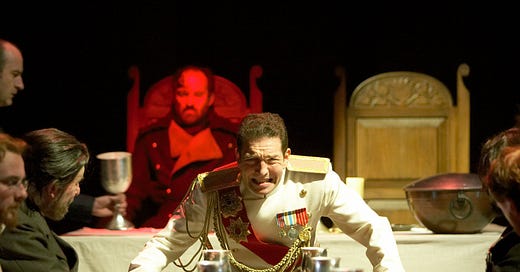


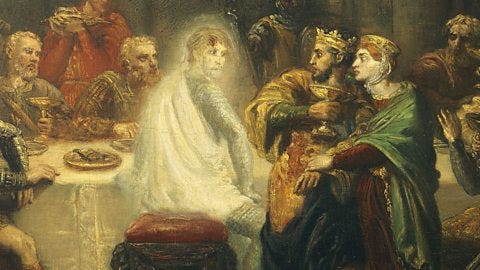
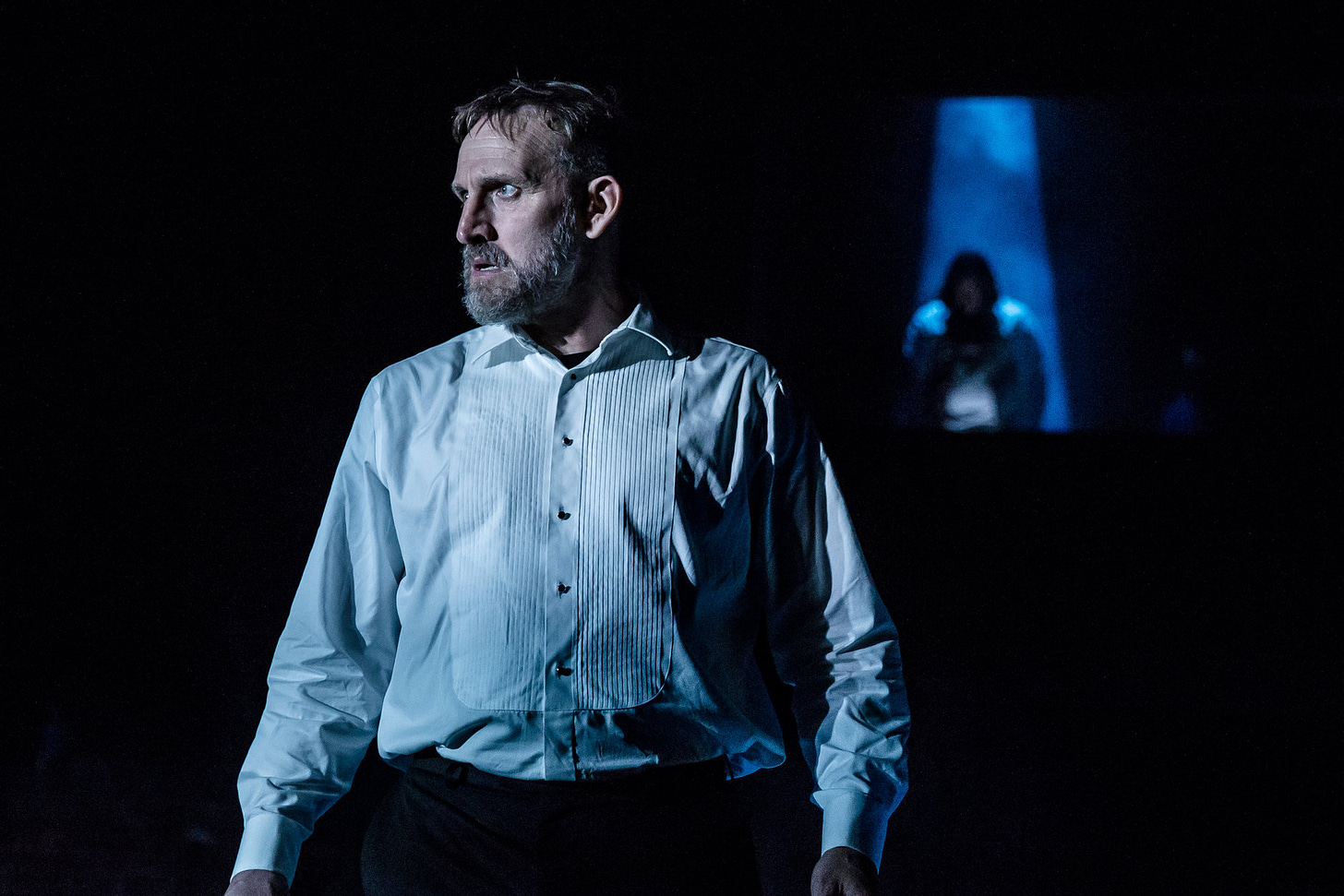
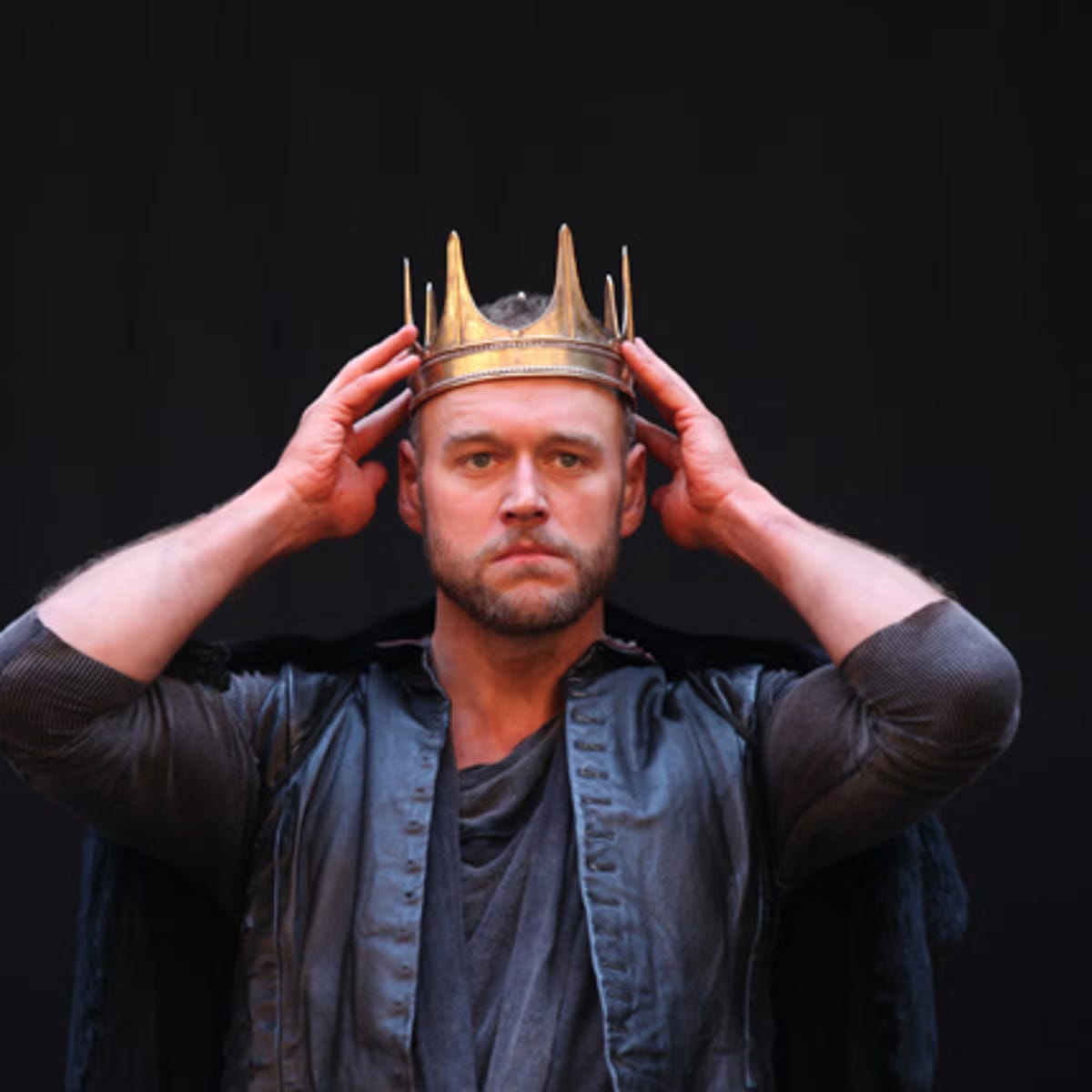
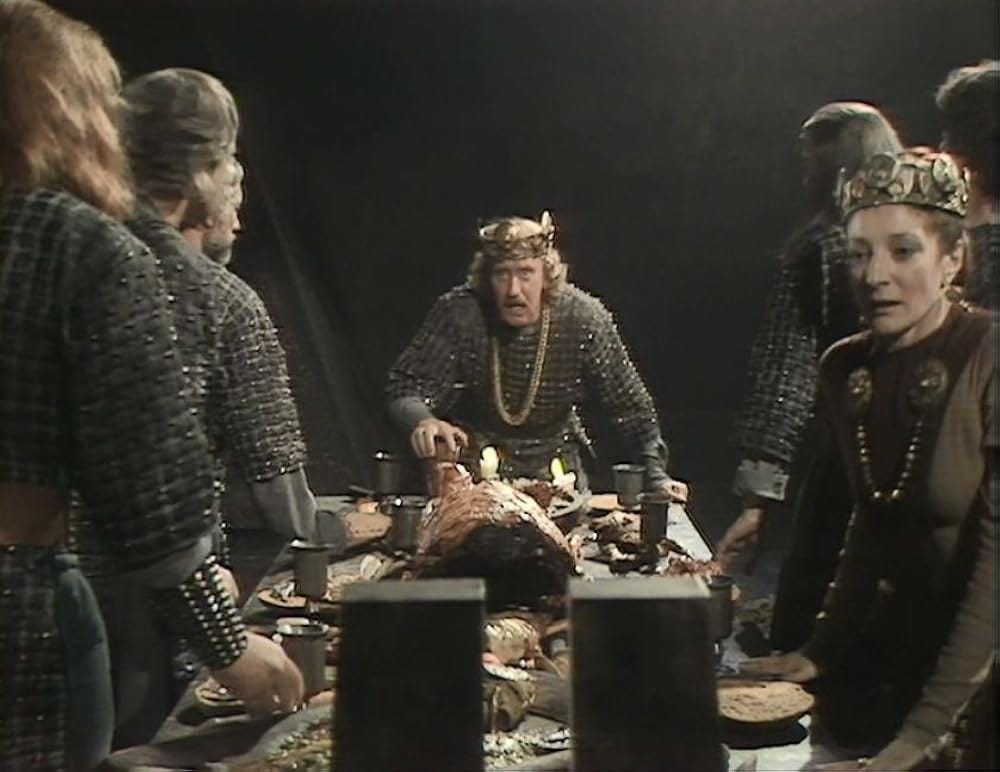
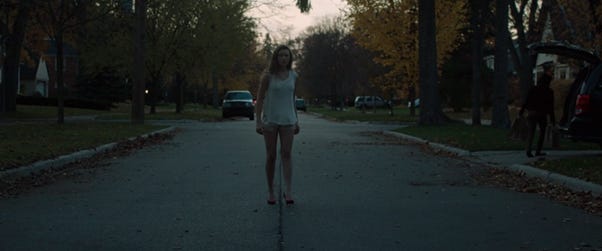
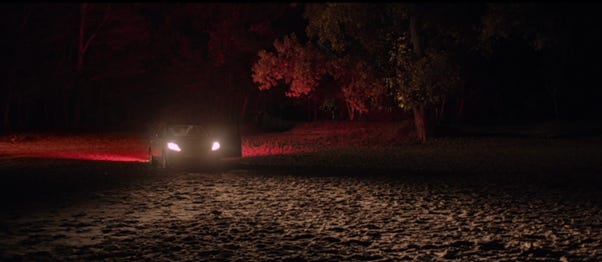
Very interesting! I’ve been making my way through MR James’s ghost stories and both selectively visible ghosts (including at dinner tables) and being relentlessly followed by a demon are common themes.
Are you into dance and/or theater at all?
There’s an immersive dance theater production in NYC called “Sleep No More,” based on Macbeth. The overall tone of the show is incredibly dark (both literally and figuratively) and tense, and in that version, Macbeth is actually the one to kill Banquo himself. Then at the banquet scene, the actual dancer who plays Banquo walks across the stage and sits down at the banquet table absolutely COVERED in blood (and the whole banquet scene is performed in slow motion. It’s very cool). Definitely less up to the audience’s interpretation in this rendition, but it’s such a powerful moment and I couldn’t imagine it performed any other way